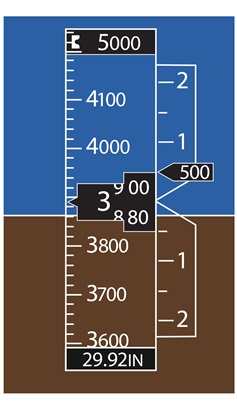How it works: Vertical speed served digitally
Is the autopilot doing its job?
 Most new training airplanes come equipped with a Garmin G1000 integrated avionics display (see “Technique: Glass Class,”). Although the pilot sees only the two screens on the panel, the system also includes sensors and computers, usually mounted behind the baggage compartment. Of these, the air data computer is the hub of how most of the primary flight display instruments are depicted, including vertical speed.
Most new training airplanes come equipped with a Garmin G1000 integrated avionics display (see “Technique: Glass Class,”). Although the pilot sees only the two screens on the panel, the system also includes sensors and computers, usually mounted behind the baggage compartment. Of these, the air data computer is the hub of how most of the primary flight display instruments are depicted, including vertical speed.
On the Garmin, vertical speed is displayed as a tape, or a vertical digital roll of climb or descent in feet per minute. As the airplane climbs or descends, a pointer slides up or down on the tape to show exactly how many feet per minute the aircraft is going up or down. To make it easier, the number is also displayed in the pointer.
Ambient air pressure is gathered from the static port, just like in a conventional instrument. But instead of going to the back of a VSI, the line is fed to the air data computer. One of the benefits of glass displays is that the computers can provide information that a pilot wouldn’t be able to discern in real time. On the G1000, for example, the computer takes vertical speed and provides a trend line on the altitude display to show what the altitude will be in six seconds. This trend line adjusts continuously as vertical speed changes.
When integrated with an autopilot, vertical speed can also be selected as a target, which will be shown as a bug fixed on the selected vertical speed value. When the pointer and the bug align, you know the autopilot is doing its job correctly.



